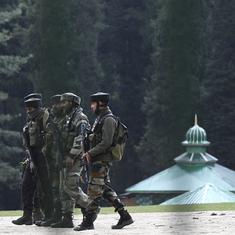Was there an evil political plot that denied Dehradun the opportunity of making it to the Ministry of Urban Development’s Smart City list for the third time?
Given the animosity between the ruling Congress and Bharatiya Janata Party over government formation, and with state elections a few months away, dirty politics is always a possibility.
Uttarakhand Chief Minister Harish Rawat has indeed blamed the Centre, but also the Nagar Nigam and Non-Governmental Organisations who interfered, for Dehradun’s “third-time unlucky” effort. But if you ignore the first part of Rawat’s excuse and concentrate on the remaining two, perhaps vision gets a little less coloured by outrage. Substitute “Nagar Nigam” for officialdom and the government itself, and you are closer to an answer.
As for NGOs, well certainly, they and activists, environmentalists and citizens did bulldoze their way into Dehradun’s first Smart City plan, under which the Uttarakhand government planned to take over 1,200-odd acres of land housing one of India’s first tea estates to enable the construction of a smart city. What option was there when the devious effort to take over part of these historic tea gardens was kept as quiet as possible? It took a prolonged battle by citizens to get their voices heard, and to get the authorities to scrap the tea garden idea and save some vital green cover.
Mission impossible?
For the average engaged citizen, however, Doon’s failure to make the Smart City list has been one of relief. That is because the concept of Doon’s smart city idea failed in its beginnings. There is a cogent argument to be made that the Smart City Mission is in itself flawed and unlikely to make substantial changes to urban spaces. However, if one were to ignore that aspect and take the scheme at face value, it can make incremental changes. Intrinsic to the scheme, according to its website, is a vision that is “aligned to the city’s economic and cultural/social strengths”. There is also a strong emphasis on citizens’ participation.
In Dehradun, it was only after citizens gatecrashed the tea garden party that they were taken notice of. The first plan having been axed, the next idea was to begin at the outskirts of the tea gardens and then encompass a massive area of over 4,000 acres that reached the city’s iconic Clock Tower or Ghanta Ghar.
The second plan lacked cohesion and a simple run-through of the Smart City Mission guidelines show that it was unlikely to ever make the cut.
It also ran into another problem. Since Uttarakhand separated from Uttar Pradesh in 2000 and Dehradun became a capital city, its growth has been topsy-turvy and untenable. A small, charming retirement town full of schools and institutions has become an ungainly sprawl with enormous building activity but no infrastructure development to keep pace. There is no proper public transport system. Drainage systems are faulty or just not there, and sanitation and garbage collection are customs honoured in the breach. Add to that, no pavements, excessive encroachment, depletion of green cover, degradation of tourist spots and you have an urban nightmare in the making.
Green factor
To the average citizen therefore, when you say “smart city”, it makes no sense at all. Even now, after a fair amount of publicity and media attention, people are confused by the words “smart city”. Some see it as a joke – because nothing in Doon looks smart right now. Others see it as an insult – we are smart enough, thank you. And most people start discussing major infrastructure problems which are not covered by the Smart City Mission.
Thus the second plan did too much to fit into the Smart City Mission’s rules and too little for people’s expectations. Albeit low down on the Smart City Mission guidelines, the environment has to be top of the charts for Dehradun. People only come to this town en route to Mussoorie, and for a little breath of fresh air. But its famous litchi orchards and fields of basmati rice are gone. Shopping malls and car showrooms have replaced them. Pollution and heat are more in evidence than clean bracing breezes. Climate change has been cruel as the last two monsoons have been deficient and essential winter rains and snowfall scanty. Dehradun’s streams and rivers are now dry river beds, encroached upon and filled with garbage. Man-animal conflicts have increased as forests make way for apartment blocks.
Fresh thinking
For the third plan, with some increased public participation, grand plans were pared down. But herein lay another hurdle. There was no fresh thinking. There was just a hurried focus on heritage conservation, waste management and pollution-free vehicles. The road to rejection, like that to hell, is often paved with good intentions. When you compare Doon’s idea to that of Delhi’s focus on Connaught Place or with Bhubaneswar’s, which has concentrated on mobility and waste management, you see how the lack of sharp thought has impeded Dehradun. A comparative visit to various city websites makes this clearer.
The collapse of Gurugram after two bouts of heavy rainfall was evidence to anyone interested in urban development that tall glass towers cannot make a “millennium city”. You have to get down and dirty and lay the basic foundation.
For Dehradun, in particular, any improvement, however small, has to start with the environment and move on to the basics of urban life. Window dressing and cosmetic changes will fool no one, smart or otherwise.
Ranjona Banerji, a journalist, has been involved in some citizens’ engagement sessions about Dehradun’s Smart City submissions. Her twitter handle is @ranjona.










